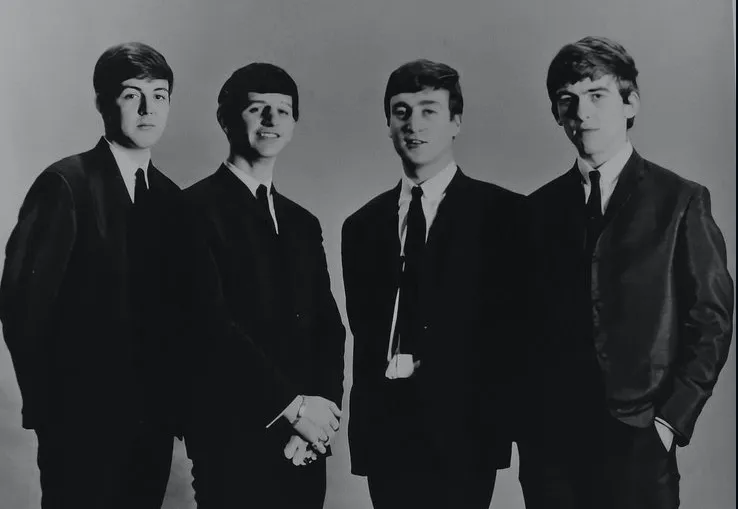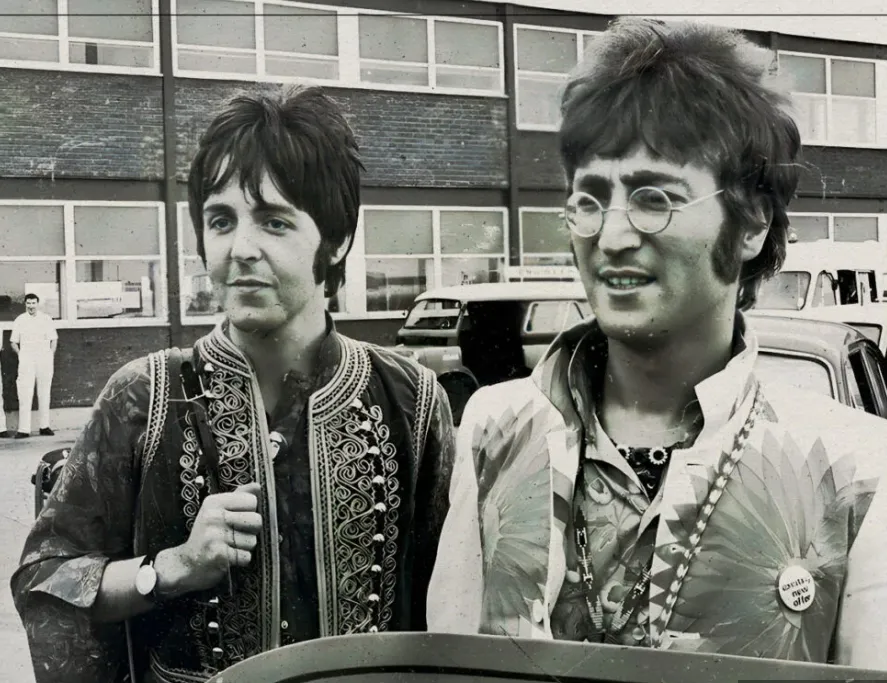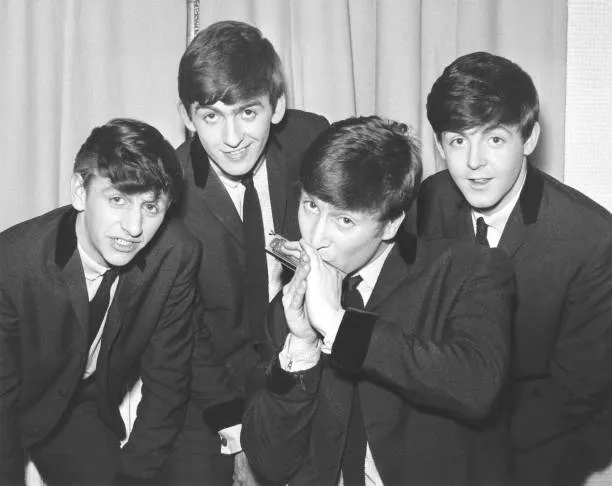In the rich annals of musical history, few years sparkle as brightly as 1967. It was a transformative period marked by cultural revolutions, artistic explorations, and an unquenchable thirst for new sounds.
At the very heart of this tumultuous year were The Beatles, a band that not only rode the waves of change but created ripples that would forever shape the musical and cultural landscape.
Let's delves into the fascinating journey of The Beatles in 1967, exploring their groundbreaking work and the profound impact it had on the world.
Setting the Stage
1967 was an extraordinary time. The world was in the midst of the counterculture revolution, and music was its lifeblood.
Emerging from the rigidity of the early 60s, young people were eager to experiment with new lifestyles, philosophies, and artistic expressions. Psychedelia was in full bloom, and the Summer of Love was on the horizon.
Amid this vibrant backdrop, The Beatles were ready to push the boundaries of their own creativity.
The Prelude: 1966 and Its Impact
To understand the significance of 1967 for The Beatles, one must look at the tail end of 1966, a year that witnessed the band’s grim tour experiences and their groundbreaking album "Revolver."
The fatigue from relentless touring led John Lennon, Paul McCartney, George Harrison, and Ringo Starr to make a monumental decision: they would focus exclusively on studio work.
This decision was liberating, providing The Beatles with the freedom to experiment with music in ways they had never done before.
The result was an explosion of creativity that defined their work in 1967.
January 1967: The Year Begins with "Strawberry Fields Forever" and "Penny Lane"
In January 1967, The Beatles began working on what would become two of their most iconic songs: "Strawberry Fields Forever" and "Penny Lane."
These tracks marked the beginning of their foray into the psychedelic sound, characterized by ethereal lyrics, innovative instrumentation, and complex arrangements.

"Strawberry Fields Forever," largely composed by John Lennon, was inspired by his childhood memories of a Salvation Army children’s home near his house in Liverpool.
The song's dreamy soundscape and reflective lyrics captured the melancholic nostalgia that would become a signature of Lennon's later works.
Contrastingly, Paul McCartney's "Penny Lane" offered a more upbeat and whimsical look at Liverpool life, filled with vivid, colorful imagery.
The song featured vibrant horn sections, adding to its playful and nostalgic feel. Together, these two songs created a perfect dichotomy, reflecting the duality of The Beatles' artistic vision.
March 1967: Recording "Sgt. Pepper’s Lonely Hearts Club Band"

By March, The Beatles had fully immersed themselves in the studio to work on what would become one of the most influential albums of all time: "Sgt. Pepper’s Lonely Hearts Club Band."
Inspired by the growing counterculture movement and their desire to break free from their former public persona, the band adopted the alter ego of Sgt. Pepper's band, allowing them to experiment freely with their music.
"Sgt. Pepper's" was a monumental undertaking that saw The Beatles pushing the boundaries of studio technology.
Under the expert guidance of their producer, George Martin, the band employed innovative recording techniques, non-traditional instruments, and eclectic influences ranging from classical music to Indian ragas.
The album's title track set the tone with its distinctive brass band motif and vivid lyrics.
It seamlessly transitioned into the whimsical "With a Little Help from My Friends," sung by Ringo Starr as his alter ego, Billy Shears.
This track highlighted the camaraderie and collaborative spirit that defined The Beatles' work.
May-June 1967: The Release of "Sgt. Pepper's Lonely Hearts Club Band"
eleased on June 1, 1967, "Sgt. Pepper's Lonely Hearts Club Band" was hailed as a revolutionary work.
The album's fusion of psychedelic rock, vaudeville, and avant-garde elements, combined with its artistic packaging, elevated it to an unprecedented level of creativity.
The cover, designed by Peter Blake and Jann Haworth, featured a collage of famous faces, making it a visual as well as auditory feast.
"Sgt. Pepper's" was not just critically acclaimed; it was a commercial success, catapulting to the top of the charts worldwide.
Songs like "Lucy in the Sky with Diamonds," "A Day in the Life," and "Being for the Benefit of Mr. Kite!" showcased the band's lyrical prowess and ability to craft multifaceted musical landscapes.
The album's closing track, "A Day in the Life," is often regarded as one of The Beatles' greatest achievements.
Its ambitious structure, combining Lennon's ethereal verses with McCartney's upbeat middle section, culminated in a monumental orchestral crescendo.
This masterpiece reflected the band's ability to merge diverse ideas into a cohesive and impactful work.
August 1967: Loss and Reflection
Amid the triumphs of 1967, The Beatles faced a profound loss. On August 27, Brian Epstein, the band's manager and close confidante, passed away from an accidental drug overdose.

Epstein had been instrumental in shaping The Beatles' career, and his death left a void that deeply affected the band.
While Epstein's death was a devastating blow, it also marked a turning point.
The Beatles realized they needed to take more control over their business affairs, leading to the formation of Apple Corps, their own multimedia company, in 1968. This newfound autonomy would play a pivotal role in their future ventures.
September-October 1967: Magical Mystery Tour
Despite the sorrow, The Beatles continued to create. By September, they embarked on another ambitious project: "Magical Mystery Tour," a television film and accompanying soundtrack.
The film, conceptualized largely by Paul McCartney, was an unconventional and surreal journey reflecting the psychedelic experiences of the time.
Though the film was met with mixed reviews, the soundtrack was a resounding success.
It featured tracks like "I Am the Walrus," a mind-bending composition by Lennon filled with nonsensical lyrics and rich orchestration, and "The Fool on the Hill," which showcased McCartney's knack for poignant and introspective songwriting.
Love and Unity: "All You Need Is Love"
1967 was also the year Lennon penned one of The Beatles' most enduring anthems, "All You Need Is Love."

Written for Our World, the first live global television link watched by over 400 million people, the song conveyed a simple yet powerful message of love and unity.
Lennon's lyrics, "All you need is love, love is all you need," became a rallying cry for the peace and love movement.
The song's sentiment resonated deeply with a world yearning for connection and harmony amidst the political and social upheaval of the era.
Epilogue: Legacy and Impact
1967 was a year of immense growth and transformation for The Beatles. It was a time when they transcended their roles as pop stars and emerged as pioneers of artistic expression.
Their work during this period not only revolutionized music but also reflected the zeitgeist of a generation seeking change and enlightenment.
"Sgt. Pepper's Lonely Hearts Club Band" remains a timeless testament to The Beatles' ingenuity and vision. Its influence is felt to this day, inspiring countless artists and musicians across diverse genres.
The album's legacy is a reminder of the limitless possibilities of creative collaboration and the power of pushing artistic boundaries.
The Beatles 1967 – A Year of Magic
The Beatles in 1967 embodied the spirit of innovation and exploration.
From the enchanting sounds of "Strawberry Fields Forever" and "Penny Lane" to the revolutionary "Sgt. Pepper's Lonely Hearts Club Band" and the universal message of "All You Need Is Love," The Beatles' contributions in 1967 were transformative and enduring.
They captured the essence of a year defined by change and left an indelible mark on music and culture, one crescendo at a time.



